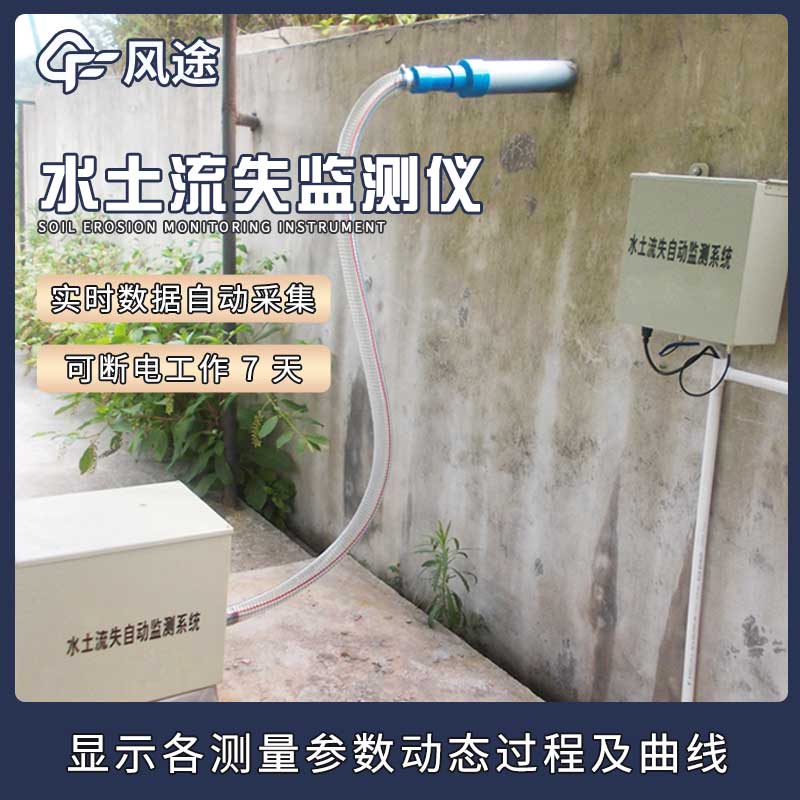Shandong Fengtu IOT Technology Co., Ltd
Sales Manager:Ms. Emily Wang
Cel,Whatsapp,Wechat:+86 15898932201
Email:info@fengtutec.com
Add:No. 155 Optoelectronic Industry Accelerator, Gaoxin District, Weifang, Shandong, China

Sales Manager:Ms. Emily Wang
Cel,Whatsapp,Wechat:+86 15898932201
Email:info@fengtutec.com
Add:No. 155 Optoelectronic Industry Accelerator, Gaoxin District, Weifang, Shandong, China
time:2025-06-18 09:19:07 source:Weather Station viewed:323 time
Soil erosion refers to the process in which soil minerals, organic matter, and substances dissolved in water are dispersed, transported, and deposited under the action of water, wind, gravity, and human factors. Its hazards are multifaceted. On the one hand, it leads to a decline in soil fertility, reduces the area of cultivated land, and decreases crop yields, affecting agricultural production. On the other hand, a large amount of sediment flowing into rivers, lakes, and reservoirs will silt up river channels, reduce reservoir capacity, and increase the frequency and severity of flood disasters, posing a threat to water resource utilization and the operation of water conservancy projects. Additionally, it will aggravate soil erosion, deteriorate the ecological environment, reduce land productivity, and affect ecological balance and sustainable development.
To effectively monitor the status of soil erosion, the FT-LS1 Soil Erosion Monitoring system is introduced by meteorological station manufacturers. It adopts an integrated structure and integrates high-precision sensors such as a rain gauge, sediment sensor, and flow sensor, which can real-time monitor multiple key parameters including rainfall, rainfall intensity, runoff, and sediment content.
The advantages of the FT-LS1 Soil Erosion Monitoring system are as follows:
It can work unattended around the clock, automatically measure and store key data. The data acquisition and storage main control unit can manage, store, and remotely transmit data, ensuring it enters a dormant state when there is no rainfall or runoff, and can operate for 7 days even in case of power outages.
It is powered by solar energy, which is energy-saving and environmentally friendly, and reduces operating costs.
The sediment concentration measurement sensor can real-time monitor the sediment concentration in runoff, the surface flow sensor assembly can automatically measure surface flow, and the rainfall sensor is dedicated to measuring rainfall-related data. The data processing is flexible, supporting local storage, interface download, and wireless transmission. Users can use computer software to online real-time monitor and display the dynamic process and curves of each measurement parameter, download historical data, etc. They can also freely set the sampling frequency and calibrate the clock on the data management main control unit on-site. The system is equipped with central control computer software, which can draw charts of runoff, sediment content, rainfall, number of rainfall events, runoff, infiltration, soil erosion, etc., based on the collected data, facilitating users to intuitively understand the situation of soil erosion.

Real-time monitoring of soil moisture is crucial to agriculture, not only for the quality of crop growth, but also for agricultural drought mitigation. Modern soil moisture monitoring technology achieves precise control of soil moisture status through intelligent means, which greatly improves the sc...
The Air Quality Monitoring Station plays a crucial role in environmental supervision.The Air Quality Monitoring Station can monitor the concentrations of various pollutants and meteorological parameters in the air, such as PM2.5, PM10, SO₂, NO₂, CO, O₃, TVOC, etc., in real-time and continuously,...
The working principle of high frequency radar level meter:FM continuous wave radar level meter general principle is the radar to the top of the tank radiation electromagnetic waves, electromagnetic waves encountered in the medium when the reflection by the radar to receive, send and receive signals...
Pulse radar level meter integrated design, no movable parts, no mechanical wear and tear, long life. Electromagnetic waves radiated during the measurement process can be propagated in a vacuum without transmission medium, which is characterized by the fact that it is not affected by factors such as...